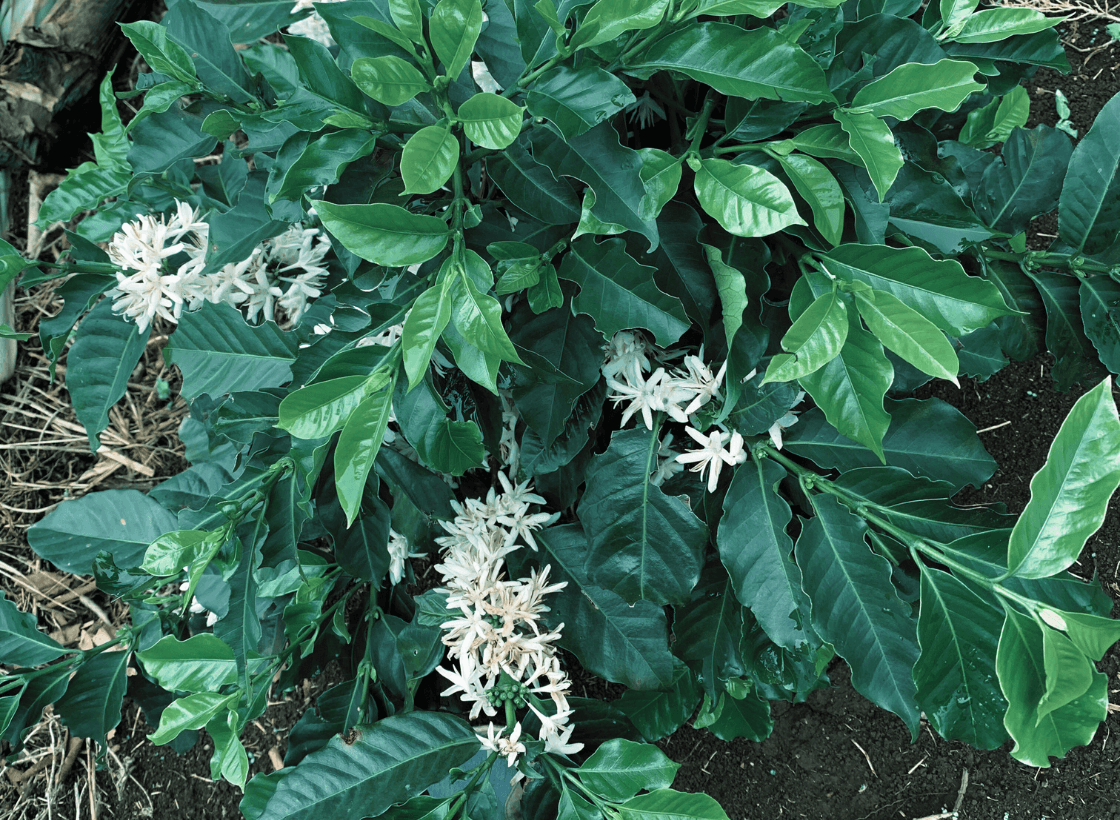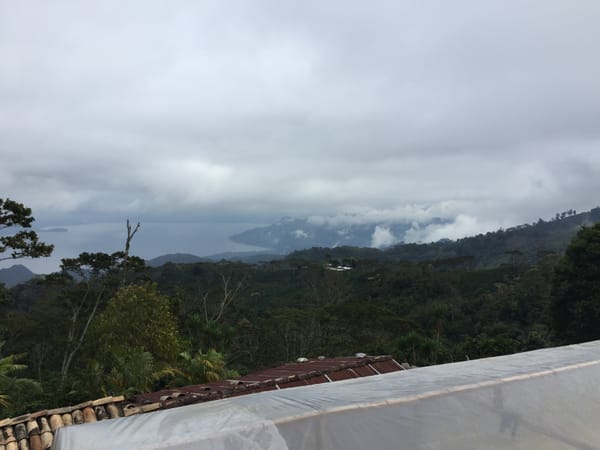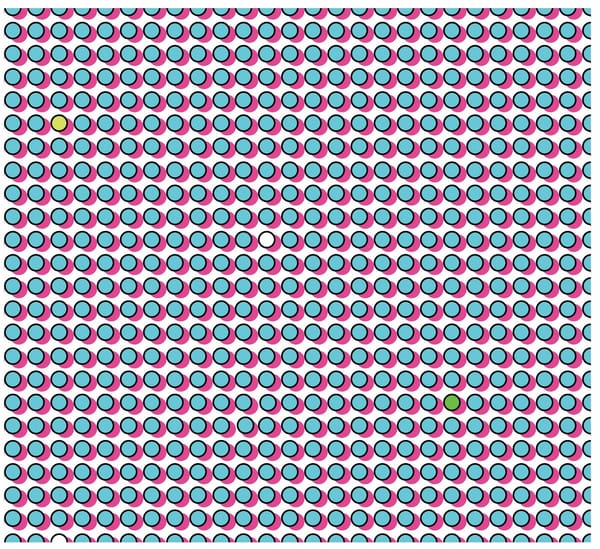March 2024 Subscription with Jhoan Vergara and Hildaly Leiva

Whenever I'm on instagram, I usually find myself pavlovian-ly tapping over to David Zilber's profile to see what he's reading, or what fermentation project he's up to. In one post, the (once head of fermentation at Noma) juggernaut forms the Venn diagram between architecture and fermentation, calling in the prolific sci-fi writer/thinker Ursula K. Le Guin as she writes,
"A leaf a gourd a shell a net a bag a sling a sack a bottle a pot a box a container. A holder. A recipient... Many theorizers suspect that the earliest cultural inventions must have been containers to hold gathered products."
To be alive is to be contained in a process or vessel of some kind. A creative thought, a microbe in a kraut jar, a controlled metamorphosis of rot resulting in coffee that defies our expectations, all these things require structure to tame the beast. A container in order to be perceived.
Over the last five years or so, the specialty coffee scene has sprinted towards producers who are taking more targeted and unconventional approaches to fermentation, coaxing the symphony of microorganisms and fungi, with undeniable results. In a sense, they're curators just as much as they are makers.
This month has us dipping a toe into that world (with a pink bourbon from Jhoan Vergara) and the other one into a familiar favourite with Hildaly Leiva's take on Parainema (this is Grevil's life partner of 'Root Beer Float' fame).
Inoculating vs spontaneous fermentation
Between bacteria (mainly lactobacillus) and yeasts - either wild from the air, or a more targeted strain as an inoculant for a batch of coffee fruit, these imperceptible creatures are the reason why we love coffee so much. Without the many strains of Saccharomyces cerevisiae and various helpful microbes, we wouldn't have its byproducts, conjuring a bundle of peonies or a tropical burst into an otherwise boring looking liquid.
In Hildaly's case, she's capturing types of yeasts and microbes at the elevation of her farm in the Santa Bárbara mountainside, letting her Parainema shine with what's already occurring in the air. Her coffee is exactly the way she wants it to be, intuiting the right moment to wash the depulped coffee and drying in a slow, careful way. This is a time tested method that requires skill and expertise - Both of which Hildaly maintains.
Jhoan is using a different approach, aiming to transmute more floral heavy finished flavours, experimenting with inoculation, temperature, variety (in this case pink bourbon) and time to get to his desired result.
In both cases, the type of bacteria and yeast in the coffee fermentation process, the length of fermentation, and other variables can all impact the final cup, influencing its resulting deliciousness.
In your box this month are vessels of flavour, in the form of coffee seeds. The containment of alchemy that took place on a mountainside in a concrete tank in Honduras & in sealed barrels with the studious coaxing of a bespoke mother culture in Huila, Colombia. Both of these approaches are crucial to the coffeeverse. Both absolutely delicious.
Enjoy these and see ya next month!
Laura (& Nate)
Jhoan Vergara
Pink bourbon lot from Jhoan’s family farm Las Flores at around 1650 masl in San Isidro, Huila
*We got this lot from Jhoan thanks to the excellent sourcing abilities of Shared Source (Thanks Andrew, Michelle and Joey!)*
Close to a decade ago in a SENA lab in Pitalito, Michael Jackson poster on the wall, a large round table, late into the evening, there were a couple teenagers excitedly tasting through experimental lots they commandeered from their respective family farms. I was there too but I may as well have been a fly on the wall witnessing the start of what was to be a rise of the nerds over the next decade (I mean that in the most endearing way possible). Jhoan Vergara was among these young folks. Along with the Lassos of El Diviso farm- both families have had a highly supportive relationship over the years. They've shared processing knowledge, tips and tricks, and even share drying and processing infrastructure when both their farms find themselves at capacity.
Jhoan’s parents migrated from Cundinamarca to Huila in the early 90s- they came after an uncle had found success in Huila. Though Huila was a new part of the country for the family, coffee farming was not- Jhoan’s grandparents were coffee producers in the north. The family started with about 15 hectares in total, but they started with just 2 ha in coffee- and grew from there to plant up to 90,000 trees- almost entirely caturra. For the first 15 years or so, the family focused on local markets, and commodity coffees- the specialty coffee industry was still very nascent. In the early 00s, Jhoan’s mother sent a coffee into the Cup of Excellence competition, and though she didn’t win, the family began to focus more on quality, and Jhoan began to learn more about coffee.
At just 15 years old, Jhoan left high school in Pitalito and began to focus on the farm, and on coffee. He began to get curious about coffee- specifically, where it ended up, and who was buying it- and he ended up at the SENA- the Servicio Nacional de Aprendizaje, or National Training Service- where many coffee producers learn agronomy, cupping, roasting, and basic brewing skills. At the SENA, Jhoan met Nestor Lasso- which will end up being a crucial friendship and partnership.
Processing
Jhoan works with a microbiology lab in Pitalito, separating microorganisms from each variety of coffee cherry to reproduce them, and then reintroduces those microorganisms to the coffee mass. When the microorganisms are applied to the mass (either as cherry or de-pulped coffee), they will be able to work efficiently, without as much competition from other microorganisms.
Jhoan says that the distinctive floral notes in his pink bourbon comes from three processes- first, an oxidation (or uncontrolled 'rot") of the coffee fruit; second, from controlled fermentation with microorganisms in a low oxygen environment; and finally from a hot thermal shock which allows the yeasts and bacteria to continue fermenting the coffee as it moves towards the drying phase.
First, cherries are picked, and left in an open weave bag (tulas) for an initial cherry ferment or oxidation process- the mass gets hotter during this process, and cherries are left for 24-48 hours depending on the weather and the brix. From there, he floats cherries to homogenize the temperature again, and de-pulps the coffee, fermenting it in sealed plastic bags. He adds the microorganisms into the coffee at this phase. Finally, he washes the coffee with hot water- the thermal shock- which Jhoan says can lend more intensity to the cup profile. Jhoan hypothesizes that the pores of the coffee are more likely to open up with a thermal shock, and the sweet and acidic notes are intensified within the beans during this process. From there, Jhoan takes the coffee down to a dehumidifying machine that his friends Adrian and Nestor Lasso manage down in Bruselas, in Huila.
What is Thermal Shock?
Despite the shocking nature of the phrase, ''Thermal Shock' requires us to hold the term with nuance. With many emerging techniques in coffee, the definitions are loose and changing. They still need to be, since many of these processes are still being explored and we're still early days. Jhoan's version of Thermal Shock differs from the one outlined in Lucia Solis' making coffee Podcast most recent episode (have a listen!) which upon listening is more like a pasteurization, or hitting pause on all microbial activity to lock in the flavours as they are. There's a danger here however. Coffee seeds are alive. A big reason why you and I love coffee so much is because of what it offers when it still has the ability to become a coffee plant. All the big sweetness, complex acidity and more, is only able to thrive when we're working with coffees that are alive (well, before we roast them haha). If the coffee can't germinate, due to it being old, or being hit with boiling water over a period of time, then the coffee will taste like cardboard. So as you can see, thermal shock, in the original definition of the term, can be an exceptionally risky practice.
What Jhoan seems to be doing here is different, however. He's found a water temp that encourages certain microbes, deters others, but then pairs that with controlled drying in a mechanical dryer. This is a repeatable process in a way that a solar or air dryer can't be, so his system in its entirety works well.
Hildaly Leiva
- Producer: Hildaly Leiva
- Origin: Santa Bárbara, Honduras
- Variety: Parainema
- Processing: Washed
- Exporter: Beneficio San Vicente
- Harvest: May 2023
- Tasting notes: herbal, kiwi, cola
Herbal with sweet, resinous Brio vibes, this weird and wonderful washed processed Parainema hybrid cultivar has flavours reminiscent of kiwi and cola, with a creamy sweet finish. Hildaly Leiva grows and processes her coffee in the Las Flores community, tucked into the mountains of Santa Bárbara, Honduras. We’re lucky to enjoy her coffee for this newest harvest.
From Hildaly:
“My dad was a coffee producer, so I grew up watching how a farm was managed. I learned a lot about how to manage a farm and I assisted doing a lot of things, from picking cherries to planting nursery plants. 11 years ago, I had the opportunity to buy my own land to plant coffee (I did not know anything about special coffee at the time), a relative of mine gave me a Catuai seed and I made the nursery and I planted it, but this farm did not last me long since in 2011 a strong outbreak of a disease came across the country that we did not know, rust. Then a neighbour offered me seed of a new variety that was of good quality and had won cup of excellence in 2015 (Eulogio Martínez was the first in the area to have Parainema coffee); So I planted almost the entire farm with Parainema and 2 years later a friend helped me take a sample of my coffee to the laboratory of the Exportadora San Vicente and there they helped me offer it to buyers and since then I have a better market for coffee from my farm.”
On Parainema
It all started in 2010 when a research institution in Costa Rica gave a specific selection of a cross between Villa Sarchi x Timor Hybrid (then called T-5296) to the Honduras coffee institute. The intention with this hybrid was for its resistance to coffee leaf rust and certain nematode infestations (something of great relevance to farmers in Honduras, especially when intercropping with bananas – whose nematodes interfere with coffee plant roots).
Meanwhile, likely around the time that IHCAFE (The Honduran Coffee Institute) was releasing the seeds for farmers to plant, Hildaly’s neighbour Eulogio (known as Yoyo for short) got what he thought was Pacamara seeds from the Honduran Coffee Institute. Over the next few years, Yoyo shared these seeds with his neighbours and they also started to plant them.
In the subsequent years, various buyers would visit, and were perplexed at this ‘paca-weirdo’ (an affectionate colloquial term we all used at the time). It was harvested when the fruit was deep purple, and the fruit looked oblong and pacamara-like to be sure, but the end of each fruit would sort of stick out a bit and other inconsistencies just made us all wonder.
By the time 2015 rolled around, Yoyo would take 1st place with his “Pacamara”, but IHCAFE revealed that it must have been a miscommunication or a typo because this weird and wonderful variety was Parainema after all.
Luna is powered by Laura & Nate, two industry nerds from Vancouver, Canada. What you just read comes as a printed colour zine each month, alongside two coffees specifically sourced for subscribers. Join us next time!





